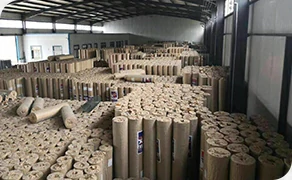 TEL:
+86-13102802206
TEL:
+86-13102802206
 Email:
fencenetting@china.com
Email:
fencenetting@china.com
 Language
Language
 TEL:
+86-13102802206
TEL:
+86-13102802206
 Email:
fencenetting@china.com
Email:
fencenetting@china.com
 Language
Language


Temporary Construction Fences Enhancing Safety and Security on Job Sites
In the bustling world of construction, safety and security are paramount. Whether it's a minor renovation or a large-scale building project, ensuring that the construction site is well-secured is crucial not just for the workers, but also for the public and the property itself. One effective solution that addresses these concerns is the use of temporary construction fences.
What is a Temporary Construction Fence?
A temporary construction fence is a portable barrier used to secure a building site, delineating the area from pedestrian traffic and preventing unauthorized access. Usually made of durable materials like chain link, vinyl, or welded wire, these fences can be quickly assembled and disassembled as the construction progresses or as different phases of a project are completed. They are renowned for their adaptability and effectiveness in maintaining safety standards on job sites.
Benefits of Temporary Construction Fences
1. Enhanced Safety One of the most significant advantages of temporary construction fences is the enhanced safety they provide. With a clearly defined boundary, both workers and the public are less likely to wander into areas where hazards exist, such as heavy machinery, deep excavations, or falling debris. This boundary helps to minimize the risk of accidents and injuries.
2. Protection from Theft and Vandalism Construction sites often contain valuable equipment and materials. A temporary fence acts as a deterrent against theft and vandalism. When would-be intruders see a well-secured site, they may think twice about attempting to breach the perimeter, thus protecting the investment made in tools, materials, and machinery.
3. Compliance with Regulations Many municipalities require construction sites to have secure barriers. By setting up a temporary construction fence, contractors can ensure compliance with local laws and regulations, avoiding potential fines and project delays. It's essential to stay ahead of regulatory requirements to ensure the smooth progression of any construction timeline.

4. Dust and Debris Control In addition to safety, temporary fences can also help manage dust and debris that can escape the site. By containing these elements, contractors can mitigate the impact on neighboring properties and maintain a cleaner environment, which can be beneficial for community relations.
5. Privacy and Noise Reduction Temporary fences can provide some level of privacy for the construction site. This is particularly crucial for projects in residential areas where homeowners may be concerned about noise, aesthetics, or disruptions. Some fences come with sound-absorbing features that can help reduce noise pollution, making life easier for nearby residents.
Choosing the Right Temporary Fence
Selecting the appropriate type of temporary fence for a construction project is critical. The decision should be based on the specific requirements of the site, including the level of security needed, the type of construction, and the duration of the project. Options such as chain link fences are popular for their security and visibility, while barricades with privacy slats offer seclusion and noise control.
Furthermore, considerations like height, material strength, and gate installation are essential factors to ensure that the fence meets the necessary standards. Consulting with fence rental companies can provide insights into the best options for each unique project.
Conclusion
Temporary construction fences are more than just barriers—they are essential tools for ensuring safety, security, and compliance on construction sites. By reducing the risk of accidents, deterring criminal activity, and controlling environmental impacts, these fences play a vital role in the success of construction projects. As the industry evolves, embracing efficient safety solutions like temporary construction fences will continue to be integral to maintaining a safe and productive work environment. Ultimately, investing in proper fencing solutions is an investment in the overall health and safety of the construction venture.